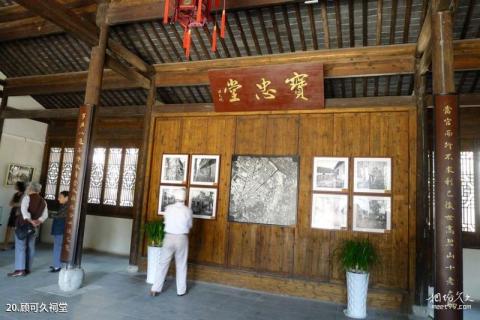
Introduction to Gu Kejiu Ancestral Hall: Gu Kejiu (1485-1561), an official of the Ming Dynasty, was named Yuxin, nicknamed Qianshan, and also nicknamed Dongyang. minister. In the fourth year of Longqing's reign, when his student Hai Rui was appointed governor of Yingtian, he memorialized and built a temple in memory of his teacher. In the 60th year of Qianlong reign of the Qing Dynasty (1795), Gu Guangxu, the eighth grandson of Gu Kejiu, made the most efforts to repair the ancestral temple. He purchased an open space behind the temple and built a five-column ancestral building. The downstairs is dedicated to the ancestors of the Gu family after they moved to Xi from Suzhou, and the upper floor is dedicated to the three ancestors of the Han Dynasty, including Gu Yong, the Marquis of Liling in Wu Dynasty. At the same time, he also moved the lake stones from the "Zhangren Peak" in the old garden of the Gu family in Beichen Temple to Huishan and erected them next to the ancestral hall. He built a stone worshiping mountain house to the east and a Songfeng Pavilion to the west. Outside the gate of the temple, there is also a screen wall with the four characters "loyalty to the emperor and patriotism" written on it, which makes the Gu Kejiu temple reach a considerable scale. In addition, there used to be a clear spring in the temple, but it was blocked over the years. Gu Guangxu personally dredged the mud and mud, so that the clear spring could trickle out again. Gu Guangxu was so happy that he wrote a poem, "How can it be that the beauty of two springs is like the spring of a salty pond?" and based on the line "I bathe in the sun with my merits and criticize my scales again" in the poem to visit the temple written by Hai Rui, the sage who built the Gu Kejiu Temple during the Longqing period of the Ming Dynasty. , named this spring "Yu Ri Spring" and carved a handwritten stone on the wall.
